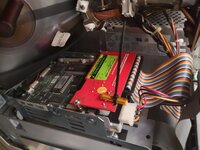macports is a good alternative that is less opinionated and condescending than homebrew, generally
It may sound silly, but something about the tone of homebrew's documentation, error messages, and especially its insistence that everyone has the ability to upgrade to the newest macos all the time really rubs me up the wrong way.
Yes, I've noticed that an increasing amount of software in general is being very presumptuous with regard to a user's desire or capability to upgrade all the time or, for another example, whether they actually
want to buy a subscription and activate online.
Like how Ubuntu decided that nobody should be allowed to use Python 2, and started uninstalling it at every update, even though I had toolsets that I didn't have the skill or time to migrate?
That made me so angry. It was so arrogant and... Un-Linux. Linux is meant to be choice and freedom, even if to make poor decisions.
Un-Linux indeed! I gave up on Ubuntu years ago because all those little niggling things just kept piling up. On their own, they're not too bad and are usually manageable, but there were so many of them, and it would be so nontrivial to undo it, that once done, it ceases to be Ubuntu, so why not just run something else that's free of all the annoyances instead? I initially went with Ubuntu because it was relatively open and contained a well rounded assortment of packages that basically make it ready to go out of the ISO. I also liked it because its parent distro, Debian Linux, is very open and quite versatile (plus a number of Debian packages could be installed onto Ubuntu with some effort).
Since they started mucking about with the UI and making it so minimalist that it's almost unusable for anything but the most basic things, I gave up on it and just went with Debian proper, since, as already mentioned, it's still (and will hopefully remain) very open.
My second favorite is Fedora, since it was one of the first distros I got into (
waaay back in 2004 when it was known as Fedora Core), but I don't always like to be on the bleeding edge because you can never tell what might break. Plus I kind of like the way apt and dpkg works versus, what is it, yum and rpm?
Oh, and talk about arrogant: Micro$soft has been doing this with Windows 10 for YEARS now (installing
by force updates — that users can't opt out of without a bunch of rigamarole — which undo customizations and optimizations and reset many personalization settings to their defaults; perhaps some of this has been fixed more recently, but as I've somehow managed to not use 10 virtually never, I wouldn't know).
I do try to avoid condescending software.
As do I.
c
 .
.
